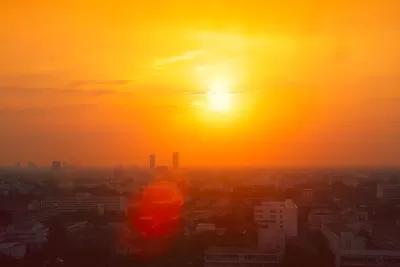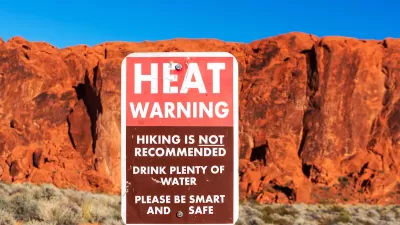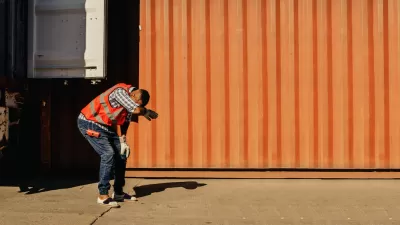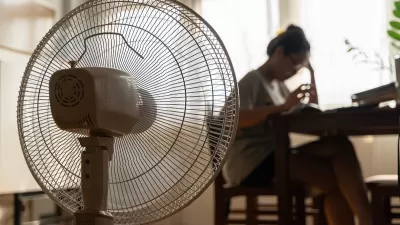This summer is predicted to be one of the hottest on record, and heat waves will likely put physical and social infrastructure to the test.

Extreme heat is threatening more communities with intense heat waves that take a sometimes deadly toll on public health, resources, and energy infrastructure. In 2021, an unprecedented heat wave struck the Pacific Northwest, shattering temperature records and killing more than 1,000 people in Canada and hundreds in Washington and Oregon. In 2022, roughly 1,670 people died of heat-related causes, the highest such number in at least two decades. And after the summer of 2023 broke temperature records around the world, 2024 is shaping up to be another scorcher.
In addition to the expected impacts — dangerous conditions for unhoused people living outdoors and those without air conditioning or other cooling options, increased wildfire risk, and outsized energy use — extreme heat has been shown to negatively impact heart health, student test scores, damage transit equipment and infrastructure, and exacerbate drought conditions. In dense cities with large amounts of pavement, the urban heat island effect raises temperatures, disproportionately impacting low-income communities with low access to parks and green spaces. Heat waves force people to use more air conditioning, straining power grids. Heat causes damage to roads, rails, and other transportation infrastructure, forcing closures and delays of key transportation systems.
Government response
Today, extreme heat has become elevated from an occasional weather quirk to a serious and ongoing public health crisis. Around the country and the world, governments are mobilizing to address rising temperatures, build more resilient cities, and offer relief to residents. From establishing heat mitigation departments to expanding access to public swimming pools and cooling centers, cities are increasingly looking at extreme heat as a major public health and policy issue.
Cities and counties including Phoenix, Los Angeles, and Miami-Dade have all created ‘Chief Heat Officer’ positions that are tasked with coordinating heat mitigation efforts across city agencies. Cities must deal with growing energy demand and aging grid infrastructure and balance the need for life-saving energy with emissions reduction goals.
Regulations like the state of Oregon’s rules around air conditioning can help protect renters and other vulnerable residents, though critics of that law say it offers too many exemptions that could leave tenants without access to air conditioning. And while air conditioning can be a lifesaving essential for residents, it also raises energy costs and emissions.
To combat the urban heat island effect and reduce temperatures in densely populated neighborhoods, some cities are experimenting with large-scale cool pavement and cool roof treatments, specialized coatings that can be applied to surfaces to reduce heat absorption and decrease ambient temperature. While these treatments have been used on individual roofs and properties, new initiatives are looking to scale up these efforts to compound their impacts on entire neighborhoods. Increasing the urban tree canopy and adding green spaces can also help lower temperatures and offer healthy spaces for residents to avoid the heat.
Extreme heat impacts planning in a variety of ways. From protecting the energy supply to safeguarding transportation infrastructure and improving public health, urban planners and city officials can take actions that mitigate the impacts of extreme heat and protect residents from negative health effects. As average temperatures rise, heat mitigation is moving to the forefront as an urgent and far-reaching issue.

Trump Administration Could Effectively End Housing Voucher Program
Federal officials are eyeing major cuts to the Section 8 program that helps millions of low-income households pay rent.

Planetizen Federal Action Tracker
A weekly monitor of how Trump’s orders and actions are impacting planners and planning in America.

Canada vs. Kamala: Whose Liberal Housing Platform Comes Out on Top?
As Canada votes for a new Prime Minister, what can America learn from the leading liberal candidate of its neighbor to the north?

Washington State’s Parking Reform Law Could Unlock ‘Countless’ Acres for New Housing
A law that limits how much parking cities can require for residential amd commercial developments could lead to a construction boom.

Wildlife Rebounds After the Eaton Fire
Following the devastation of the Eaton Fire, the return of wildlife and the regrowth of native plants are offering powerful signs of resilience and renewal.

LA to Replace Inglewood Light Rail Project With Bus Shuttles
LA Metro says the change is in response to community engagement and that the new design will be ready before the 2028 Olympic Games.
Urban Design for Planners 1: Software Tools
This six-course series explores essential urban design concepts using open source software and equips planners with the tools they need to participate fully in the urban design process.
Planning for Universal Design
Learn the tools for implementing Universal Design in planning regulations.
Central Transportation Planning Staff/Boston Region MPO
Heyer Gruel & Associates PA
Institute for Housing and Urban Development Studies (IHS)
City of Grandview
Harvard GSD Executive Education
Regional Transportation Commission of Southern Nevada
Toledo-Lucas County Plan Commissions






























